Shell Week: Expert lists 10 rare seashells you can find on Florida beaches. Good luck!
Note to readers: The News-Press and Naples Daily News are presenting a series of stories, photos and videos this week about shells and shelling in Southwest Florida − from shell art to shelling etiquette and a closer look at the rare shells you can find on beaches here.Every collection needs a "gotta have it" bucket list. Stamps. Coins. Baseball cards. Comic books. Movie posters. Yes, even seashells.
And with seashells, what's nice is, you already have a bucket so it is just a matter of checking off the shells you really want for your collection and those shells on your bucket list.
Good news!: Sanibel's famed national shell museum to reopen its doors March 1 after Ian comeback
For this exercise, we are purposely leaving the super popular Junonia shell off the list because we already know it is rare and one of the most sought after shells in Southwest Florida.
So, we asked an expert for some help with putting together a list of seashells you can find on Florida beaches that are rare and should be on every collectors list. His name is Dr. Jose H. Leal. He is the Science Director and Curator for the Bailey-Matthews National Shell Museum on Sanibel Island. Leal's love for shells and sea life goes back to his childhood years in Rio de Janeiro, Brazil.
He has a pretty good idea why people love seashells.
"We have been attracted to shells since the dawn of human cultures. Humans have been using shells as ornaments, currency, and sources of artistic inspiration for longer than we can fathom," Leal said. "Shells are mostly pretty objects of a handy size, not too small nor too large, which makes them easy to spot on the beach or in the water, and appealing to display at home. Individual shell kinds, or species, are variable in size and color patterns, which makes us want to pick up “just one more,” so that we can have and show a range of variation within that same species.
"Most of all, I believe in the allure of the search, the mystery of not knowing what treasure one may find next, on that next stretch of beach, or, when snorkeling in clear water, around that rock or coral head. And shells are free for the taking!"
An important reminder: You shouldn't collect a seashell that containing a living organism in it. Here is what the Florida Fish and Wildlife Commission has to say about it.
What are some of the rare seashells you can find on Florida beaches?
Here is a list compiled by Leal that he put together using his knowledge and expertise of shells that can be found on beaches in Florida:
Eureka! This man found a rare shell: After years of searching, Fort Myers man finally finds rare shell on Sanibel Island
1-Atlantic Morum (Morum oniscus)
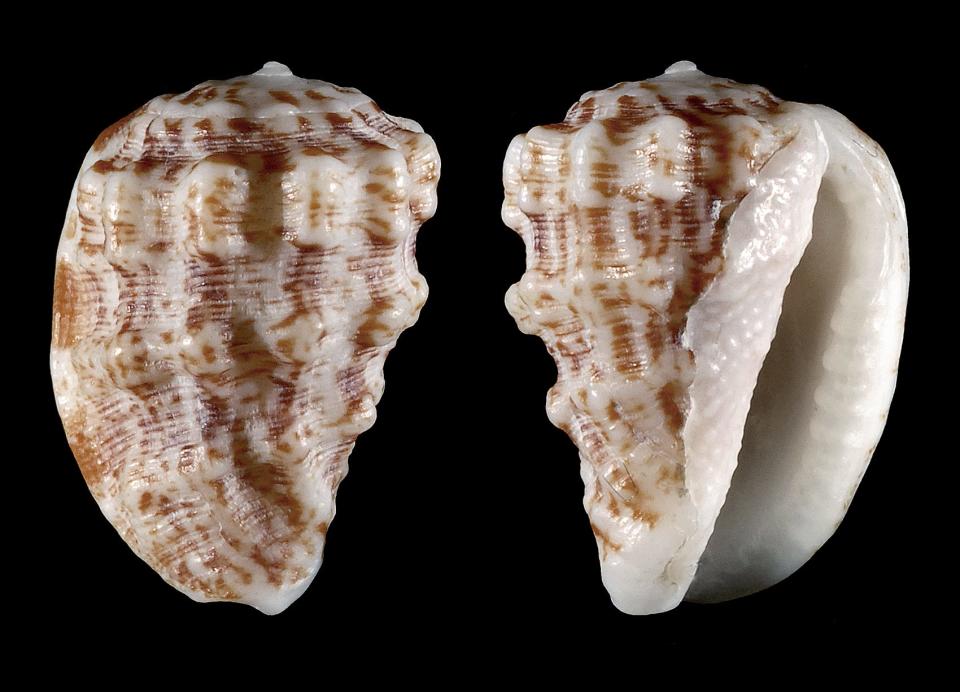
DESCRIPTION: Attaining about 1.25 inch, the slightly cylindrical Atlantic Morum has spiral rows of small knobs and a color pattern of grayish-brown patches on a whitish background.
CHANCES OF FINDING (scale of 1-10 with 10 being unlikely): 9
WHAT MAKES IT RARE: This little (about an inch long), compact shell lives in deeper water in the Gulf of Mexico. There are examples found up the Coast on Sarasota County, but only one was found locally, on Captiva.
2-Fine-cut Nutmeg (Ventrilia tenera)
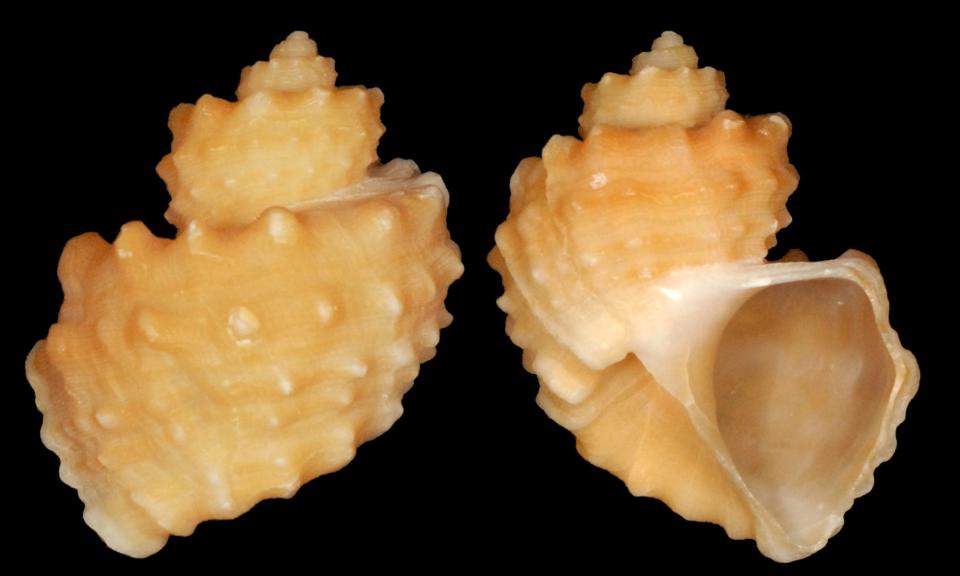
DESCRIPTION: A stocky, solid shell that reaches about 1.5 inches. The base (bottom) of the shell has a deep hole known as the *umbilicus*.
CHANCES OF FINDING (scale of 1-10 with 10 being unlikely): 9
WHAT MAKES IT RARE: This exquisite shell is a relative of the more common Nutmeg, only three have ever been found on Sanibel-Captiva.
3-Arrow Dwarf Triton (Tritonoharpa lanceolata)
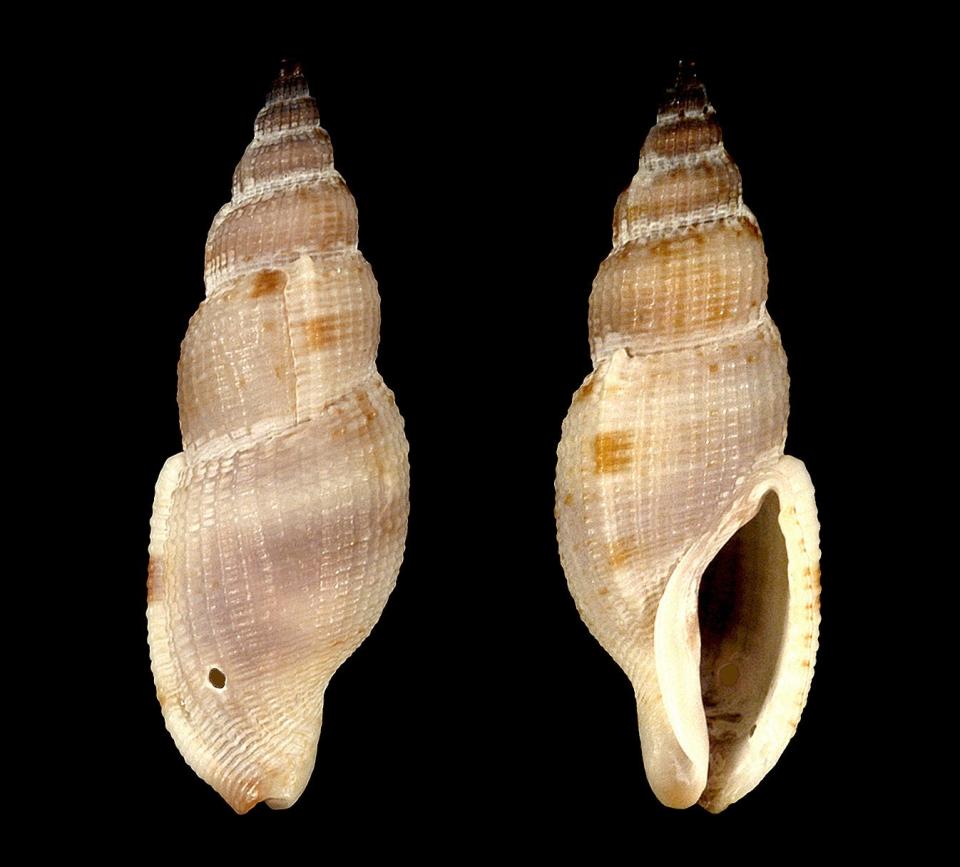
DESCRIPTION: Fully grown shells reach only about 1.5 inches in size. The shell is slender and has its surface criss-crossed by fine etched lines. Its color is gray with brown markings.
CHANCES OF FINDING (scale of 1-10 with 10 being unlikely): 7
WHAT MAKES IT RARE: Not super-rare, Arrow Dwarf Tritons are attractive, small shells resembling a miniature triton shells. Also live in deeper water a bit offshore.
What's your favorite?: These 5 Florida beach destinations get 'Best in South' designation
4-Beau Vitrinella (Cyclostremiscus beauii)
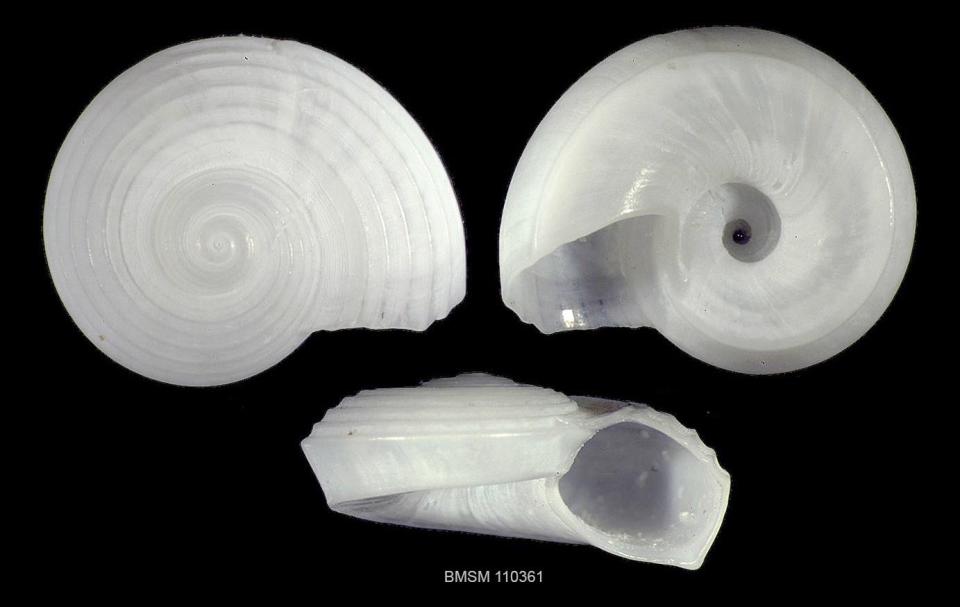
DESCRIPTION: A small, disk-shaped shell that reaches only about a half-inch in size.
CHANCES OF FINDING (scale of 1-10 with 10 being unlikely): 8
WHAT MAKES IT RARE: Not necessarily rare, but its small size makes it harder to find to the untrained eye (this is true for all small shells and particularly micromollusks, which, by definition, never grow beyond 0.2 inch.
5-Stimpson Chimney Clam (Rocellaria stimponii)

DESCRIPTION: This is a 0.7 inch shell, very thin, fragile, oval shell that may break if held too forcefully. Color is dirty-white, slightly translucent.
CHANCES OF FINDING (scale of 1-10 with 10 being unlikely): 5, 10
WHAT MAKES IT RARE: Not super rare, but its life habits, living buried into larger shells (!), makes it impossible to find to the untrained person. Shells of this small clam can only be obtained by digging them out of their host shells! Hence the reason for my dual scoring of 5 (if you know where to look) and 10 (if you don't).
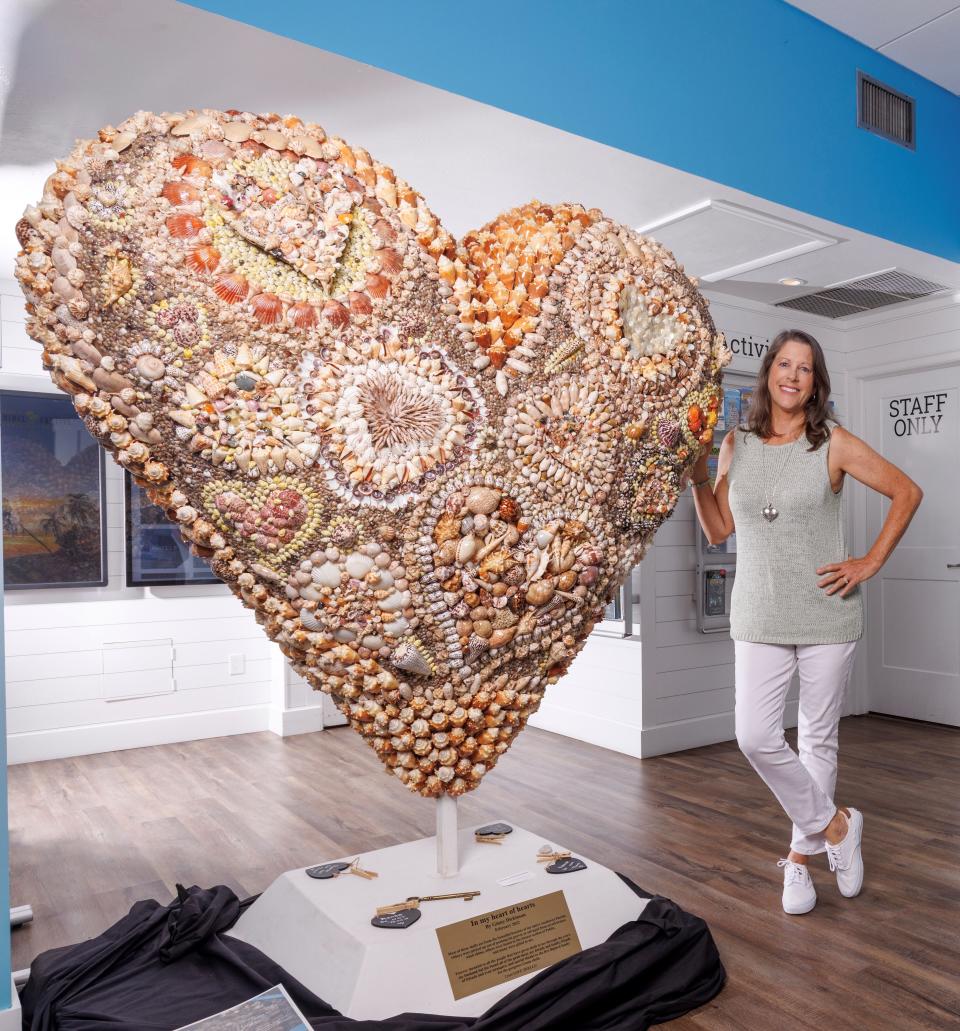
Making art out of shells: The best way to describe Fort Myers woman's passion for seashells is 'heartwarming'
6-Atlantic Paper Mussel (Arcuatula papyria)
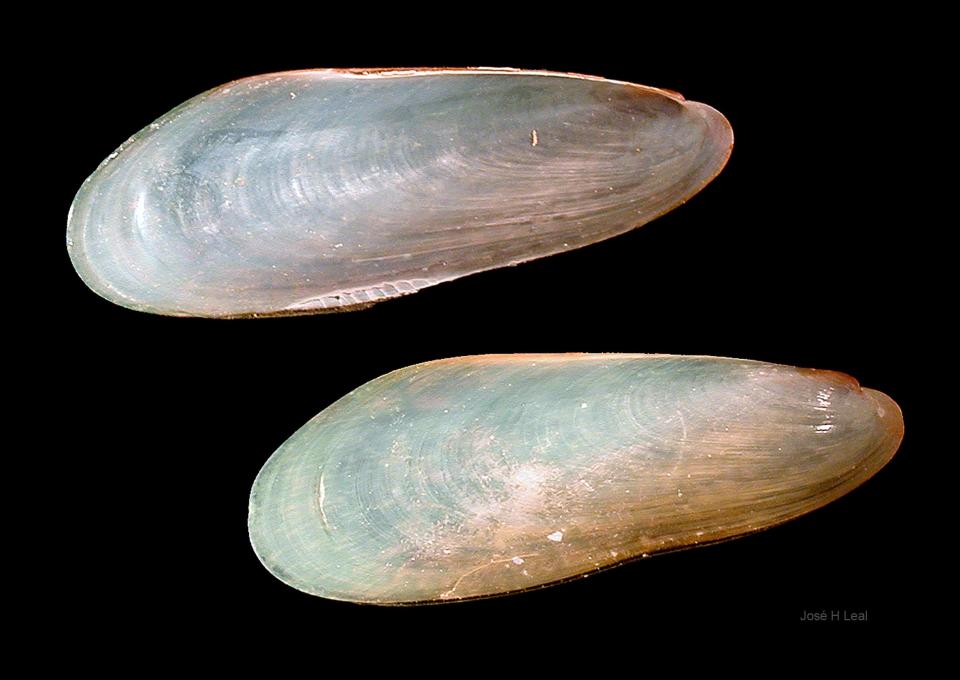
DESCRIPTION: A very thin shell, the Atlantic Paper Mussel reaches about 1.6 inches. It is shaped like a
CHANCES OF FINDING (scale of 1-10 with 10 being unlikely): 5, 10WHAT MAKES IT RARE: Again, not necessarily rare, but the life habits of this mud-dweller makes it difficult to find, unless you are willing to stick your hands in the thick mud of protected back-bay waters. The shells are also very fragile, which makes their preservation difficult after death of the animal inside. Again I scored this with 5 and 10, with 5 for if you know where to look and 10 if you don’t.
7-Scotch Bonnet (Semicassis granulata)
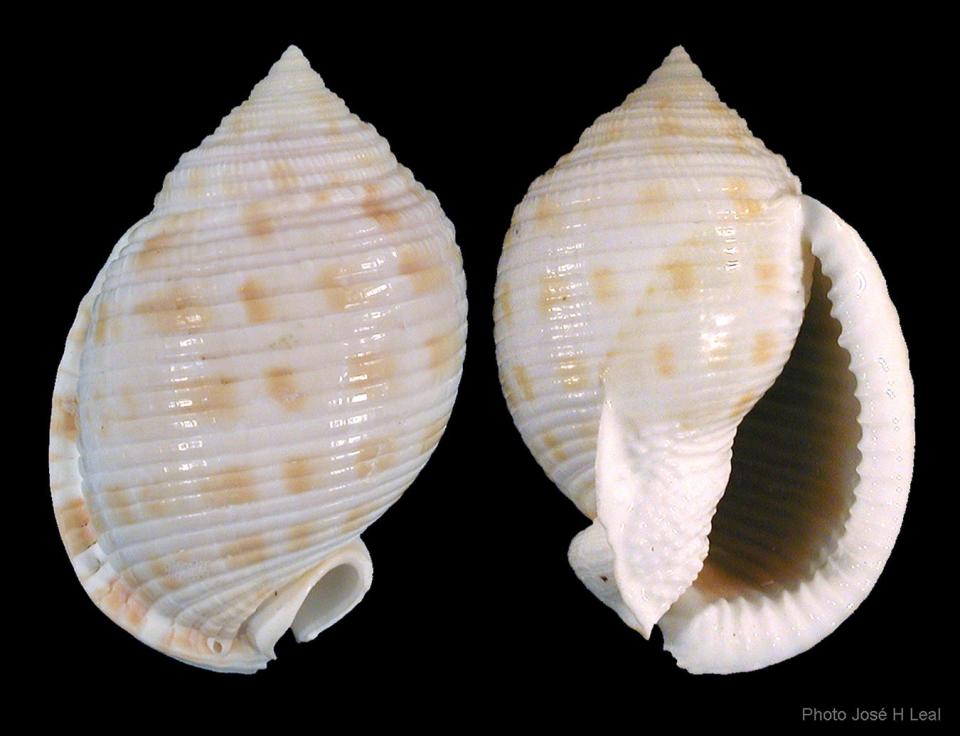
DESCRIPTION: This species may reach up to 4.8 inches in length. It has a typical oval shape with a a surface embellished by fine revolving lines. The color is cream-white, with distinctive spots of light-brown.
CHANCES OF FINDING (scale of 1-10 with 10 being unlikely): 8
WHAT MAKES IT RARE: A much-prized local species that is relatively common offshore, depper in the Gulf, but difficult (but not impossible) to find on the beach.
8-Queen Helmet (Cassis madagascariensis)
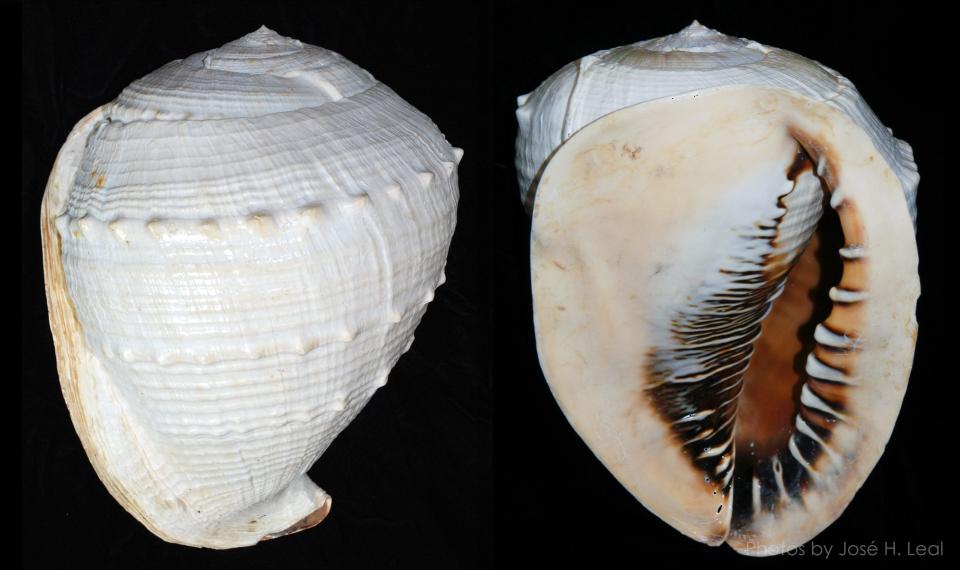
DESCRIPTION: A large, heavy, barrel-like shell with a shield-like dorsal region and “teeth-like” structures
CHANCES OF FINDING (scale of 1-10 with 10 being unlikely): 9
What makes it rare: Another deeper water dweller, complete, adult shells of this very large species were never found on the local beaches, only- inch-long juveniles. Otherwise, broken pieces of larger shells have been found after storms.
9-Giant Tun (Tonna galea)
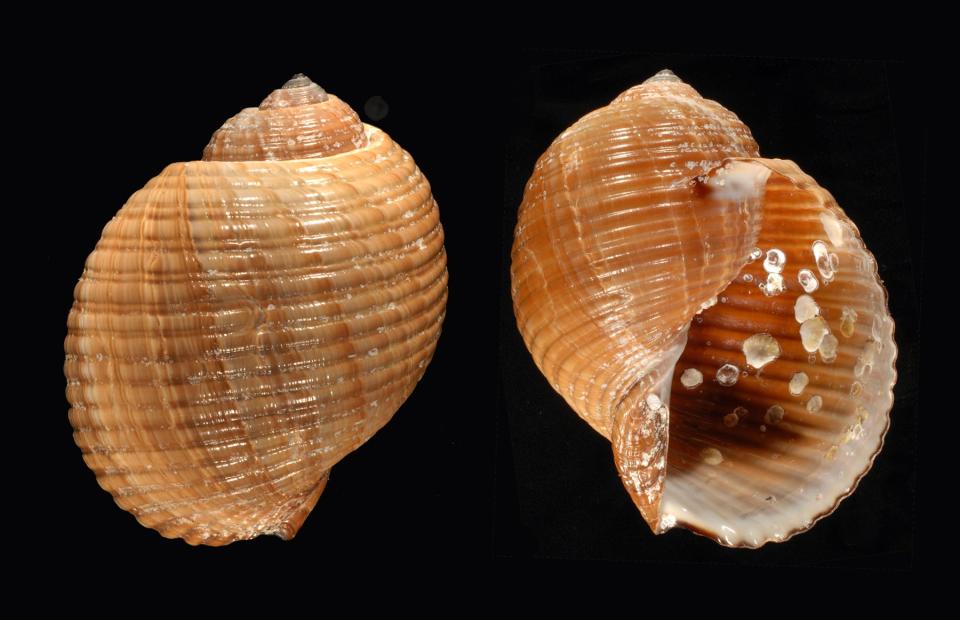
DESCRIPTION: A large, rounded, shell that may reach about 7.5 inches, the Giant Tun shows revolving ridges that, thanks to a very thin shell, can be seen outside and inside its shell.
CHANCES OF FINDING (scale of 1-10 with 10 being unlikely): 10
WHAT MAKES IT RARE: Only has been found on Sanibel, in two-feet deep water. The species has free-living, open-water larvae that are transported by ocean currents, which affords the species a very broad geographic distribution in the world’s tropical and subtropical waters. A single larvae may be carried and settle away from potential mates that would allow for local perpetuation of the species.
Jackpot: 2 large horse conch shells: Shelling on Sanibel: Visitors from Buffalo uncover two large horse conch shells
10-Dog Head Triton (Ranularia cynocephala)
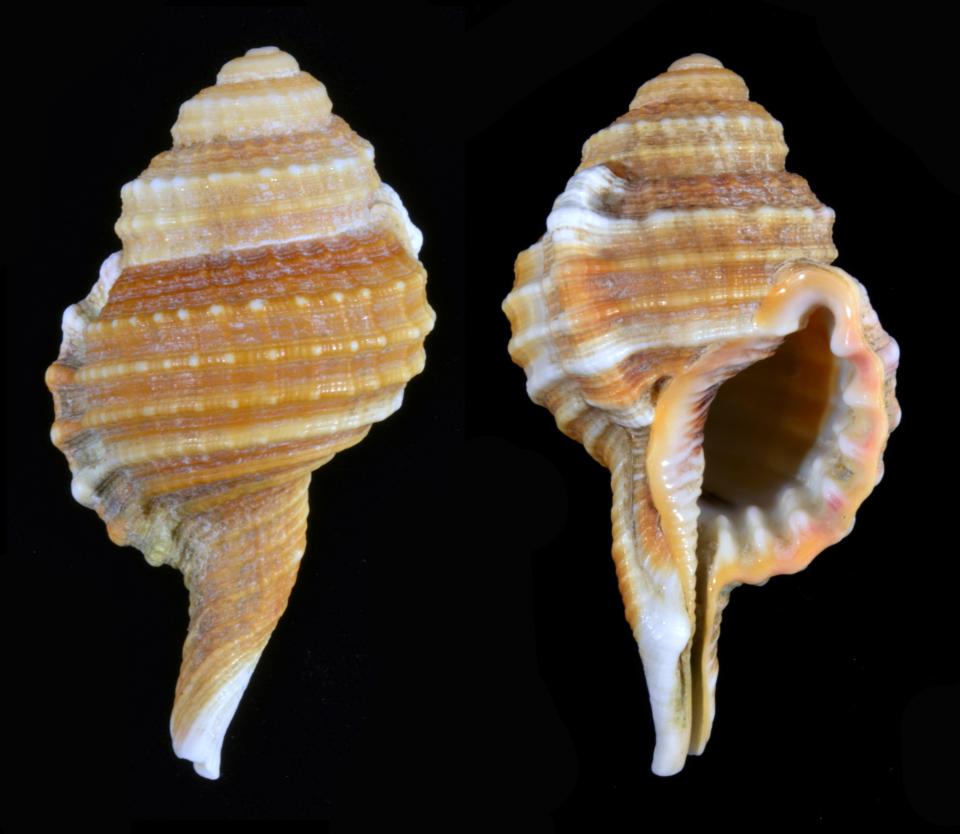
DESCRIPTION: A rounded, three-inch shell with a long siphonal canal, with a surface sculpture of raised revolving ridges. The general shell shape evoked the shape of a dog’s head to the researcher who named it.
CHANCES OF FINDING (scale of 1-10 with 10 being unlikely): 9
WHAT MAKES IT RARE: Another species with broad geographic distribution, and found in deeper water in the Gulf of Mexico, the National Shell Museum has only two shells from Sanibel Island in its scientific collection.
This article originally appeared on Fort Myers News-Press: Rare seashell finds in Florida include scotch bonnet, queen helmet

